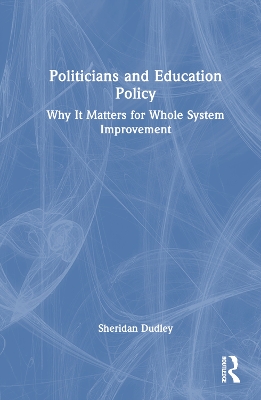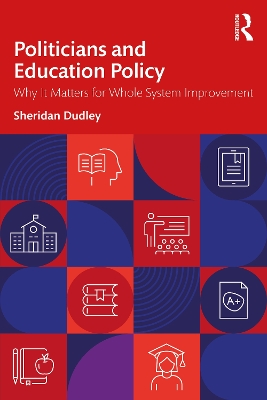Towards Ensuring Inclusive and Equitable Quality Education for All
 portes grátis
portes grátis
Towards Ensuring Inclusive and Equitable Quality Education for All
Analyzing School Enrolment Patterns
Sekiya, Takeshi; Ogawa, Keiichi; Kitamura, Yuto; Ashida, Akemi
Springer International Publishing AG
11/2024
373
Dura
9783031702655
15 a 20 dias
Descrição não disponível.
Chapter 1: Introduction.- Part I: Traditional approaches to children's school enrolment analyses: The overview of the regional cross-sectional approach.- Chapter 2: Challenges for providing quality education in Central America: Lessons from the achievements of the past four decades.- Chapter 3: Notable progress and prospective challenges in diverse regions of South and Southeast Asia.- Chapter 4: Access or quality? New challenges in Sub-Saharan Africa.- Part II: Country case studies: Findings from enrolment pattern analysis.- Chapter 5: Who has still been left behind? A comparative analysis of children's enrolment patterns in different geographical areas of Honduras.- Chapter 6: Changes in female primary and secondary school enrolment in El Salvador since the early 1980s.- Chapter 7: Barriers to completion of basic education: Individual children's actual enrolment status in Nepal.- Chapter 8: Analysis of enrolment patterns in Myanmar's primary education by socioeconomic status.- Chapter 9: Impact of 'ethnic affinity' between teachers and children on enrolment status: Evidence from the northern Lao PDR.- Chapter 10: Examining student enrolment patterns: Case of lower secondary school in Siem Reap, Cambodia.- Chapter 11: Analysis of student retention in primary education level under Mongolia's automatic promotion policy.- Chapter 12: Educational strategies of children living in a developing country: A longitudinal school record study of Malawi secondary schools.- Chapter 13: Analysis of students' flow patterns from primary through lower secondary cycle under automatic promotion policy in Uganda.- Chapter 14: Individual learners' enrolment status in primary and secondary education: A case study of a rural city in Zambia.- Part III: International comparative analysis: Factors preventing children from enrolment.- Chapter 15: Common enrolment patterns, grade repetition and unique cases: International comparative analysis on enrolment status.- Chapter 16: Lessons from Japanese educational development experiences: Comparison of enrolment status between developing countries and the Meiji of Japan.- Chapter 17: Conclusion: Prospects and implications from individual children's school enrolment analysis.
Este título pertence ao(s) assunto(s) indicados(s). Para ver outros títulos clique no assunto desejado.
school enrollment;Children's socioeconomic status;Education and social inequality;comparative education;SDG 4;Quality Education;Primary school;Longitudinal data on education;Accessible education
Chapter 1: Introduction.- Part I: Traditional approaches to children's school enrolment analyses: The overview of the regional cross-sectional approach.- Chapter 2: Challenges for providing quality education in Central America: Lessons from the achievements of the past four decades.- Chapter 3: Notable progress and prospective challenges in diverse regions of South and Southeast Asia.- Chapter 4: Access or quality? New challenges in Sub-Saharan Africa.- Part II: Country case studies: Findings from enrolment pattern analysis.- Chapter 5: Who has still been left behind? A comparative analysis of children's enrolment patterns in different geographical areas of Honduras.- Chapter 6: Changes in female primary and secondary school enrolment in El Salvador since the early 1980s.- Chapter 7: Barriers to completion of basic education: Individual children's actual enrolment status in Nepal.- Chapter 8: Analysis of enrolment patterns in Myanmar's primary education by socioeconomic status.- Chapter 9: Impact of 'ethnic affinity' between teachers and children on enrolment status: Evidence from the northern Lao PDR.- Chapter 10: Examining student enrolment patterns: Case of lower secondary school in Siem Reap, Cambodia.- Chapter 11: Analysis of student retention in primary education level under Mongolia's automatic promotion policy.- Chapter 12: Educational strategies of children living in a developing country: A longitudinal school record study of Malawi secondary schools.- Chapter 13: Analysis of students' flow patterns from primary through lower secondary cycle under automatic promotion policy in Uganda.- Chapter 14: Individual learners' enrolment status in primary and secondary education: A case study of a rural city in Zambia.- Part III: International comparative analysis: Factors preventing children from enrolment.- Chapter 15: Common enrolment patterns, grade repetition and unique cases: International comparative analysis on enrolment status.- Chapter 16: Lessons from Japanese educational development experiences: Comparison of enrolment status between developing countries and the Meiji of Japan.- Chapter 17: Conclusion: Prospects and implications from individual children's school enrolment analysis.
Este título pertence ao(s) assunto(s) indicados(s). Para ver outros títulos clique no assunto desejado.







